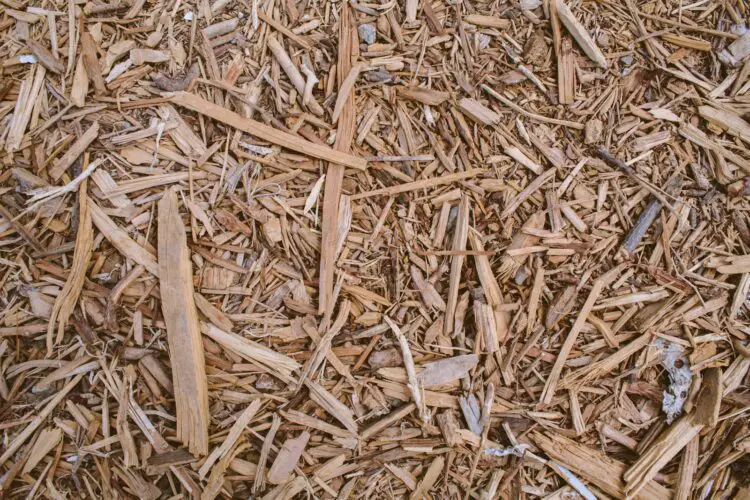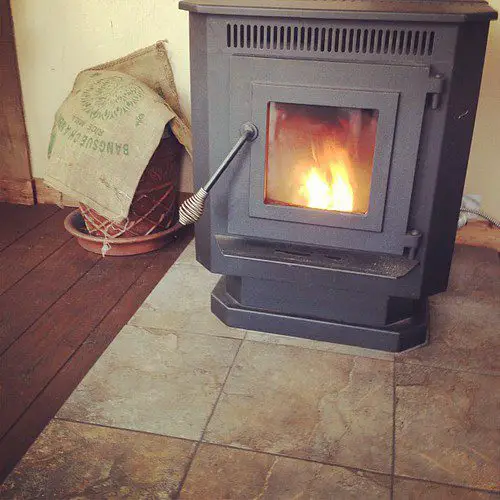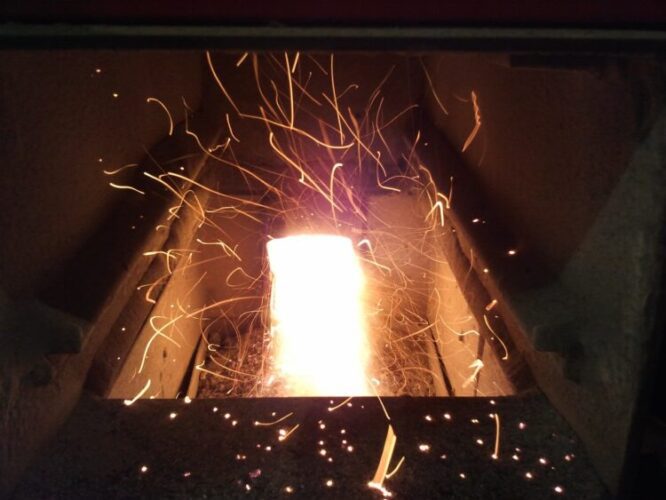Debunking the Myths and Understanding the Realities
Pellet stoves have become increasingly popular as an efficient and eco-friendly heating option for many households. However, there remains some confusion and misconceptions about what can and cannot be burned in a pellet stove. One prevalent question is, “Can you burn wood in a pellet stove?” In this comprehensive article, we will delve into the workings of pellet stoves, explore the differences between pellets and traditional wood, and provide a clear understanding of what can be used as fuel in a pellet stove.
Understanding Pellet Stoves
Pellet stoves are a type of heating appliance that burns compressed wood or biomass pellets to produce heat. They consist of a hopper, an auger system, a combustion chamber, and a fan. The hopper stores the pellets, and the auger transfers them to the combustion chamber. Once in the combustion chamber, the pellets are ignited, and the produced heat is distributed throughout the space by a fan.
These stoves are known for their efficiency and clean-burning characteristics. Pellet stoves are designed to burn pellets that are specifically manufactured for this purpose. These pellets are produced from compacted sawdust, wood chips, bark, agricultural crop waste, and other biomass materials.

Can You Burn Wood in a Pellet Stove?
The short answer is no. Pellet stoves are engineered to burn pellets of a specific size and composition. Attempting to burn regular firewood or wood logs in a pellet stove can lead to various issues and may damage the stove. Here are some reasons why burning regular wood in a pellet stove is not advisable:
- Size and Shape: Pellet stoves are designed to accommodate small, uniform pellets. Burning regular wood, which is larger and bulkier, can lead to inefficient combustion and may clog the feeding mechanism.
- Combustion Efficiency: Pellet stoves operate at high combustion efficiency when burning pellets. Introducing irregularly shaped wood logs can disrupt the carefully calibrated combustion process, reducing efficiency and increasing emissions.
- Ash Production: Pellet stoves produce minimal ash compared to traditional wood-burning stoves. Burning regular wood may result in excessive ash production, leading to more frequent cleaning and maintenance requirements.
- Overheating: The design and components of pellet stoves are optimized for the controlled burning of pellets. Burning regular wood may generate higher temperatures than the stove is designed to handle, potentially causing damage to the stove and surrounding materials.
Choosing the Right Fuel for Your Pellet Stove
While burning regular wood in a pellet stove is not recommended, it’s essential to use high-quality pellets that meet the stove manufacturer’s specifications. Here are some key considerations when choosing pellets for your pellet stove:
- Pellet Composition: Opt for pellets made from clean, dry wood or biomass materials without additives. High-quality pellets ensure efficient combustion and reduce the risk of issues such as clinkers and ash buildup.
- Pellet Size and Density: Choose pellets that match the size and density recommended by the stove manufacturer. Using pellets of the correct specifications ensures smooth feeding into the combustion chamber and optimal burn performance.
- Certifications: Look for pellets with industry certifications, such as the Pellet Fuels Institute (PFI) certification. Certified pellets adhere to specific quality standards, providing assurance of their suitability for use in pellet stoves.
- Moisture Content: Low moisture content is crucial for efficient pellet combustion. Ensure that the pellets have the appropriate moisture level, usually around 5-8%. Excess moisture can lead to poor combustion and increased emissions.
Common Myths and Misconceptions
To further clarify the question of burning wood in a pellet stove, let’s address some common myths and misconceptions surrounding this topic:
- Myth: Pellet stoves can burn any type of biomass.
- Reality: Pellet stoves are specifically designed for pellets made from wood or biomass materials. Burning other types of biomass, such as corn or cherry pits, may not produce optimal results and could damage the stove.
- Myth: Regular wood can be used in a pellet stove with minor adjustments.
- Reality: Pellet stoves are precision-engineered for pellet combustion. Modifying a pellet stove to burn regular wood may compromise its safety, efficiency, and longevity.
- Myth: Burning regular wood in a pellet stove is a cost-effective alternative.
- Reality: Pellet stoves are designed to maximize the efficiency of pellet combustion. Burning regular wood may result in lower efficiency, higher fuel consumption, and increased maintenance costs.
- Myth: Pellet stoves and wood-burning stoves are interchangeable.
- Reality: Pellet stoves and traditional wood-burning stoves have distinct designs and fuel requirements. Attempting to use one type of stove for the fuel intended for the other can lead to safety hazards and operational issues.

Advantages of Using Pellets in a Pellet Stove
Now that we’ve established that burning regular wood in a pellet stove is not recommended, let’s explore the advantages of using pellets as the designated fuel for pellet stoves:
- Efficiency: Pellet stoves are highly efficient when burning pellets, providing consistent and controllable heat. The design of the combustion chamber and the feeding mechanism is optimized for pellet combustion.
- Clean Burning: Pellets produce minimal ash and emissions compared to traditional wood-burning stoves. This results in cleaner air quality and less frequent cleaning and maintenance requirements.
- Convenience: Pellets are available in bags, making them easy to store and handle. The automated feeding mechanism in pellet stoves allows for hands-free operation, eliminating the need for constant attention and manual fuel feeding.
- Environmental Sustainability: Pellets are often made from recycled wood and biomass materials, contributing to a more sustainable and eco-friendly heating option. Additionally, the controlled combustion of pellets minimizes environmental impact.
Common Issues and Troubleshooting
While pellet stoves are generally reliable, users may encounter occasional issues. Here are some common problems and troubleshooting tips:
- Pellet Feeding Problems:
- Issue: Pellets not feeding into the combustion chamber.
- Troubleshooting: Check for pellet blockages in the hopper or auger system. Ensure that the pellets meet the recommended size and density.
- Excessive Ash Buildup:
- Issue: Increased ash production.
- Troubleshooting: Use high-quality pellets with low moisture content. Clean the stove regularly, including the ash pan and heat exchanger.
- Inefficient Combustion:
- Issue: Poor burn performance and low heat output.
- Troubleshooting: Verify that the pellets used meet the stove manufacturer’s specifications. Clean the burn pot and combustion chamber.
- Unusual Noises:
- Issue: Unusual sounds during operation.
- Troubleshooting: Inspect the auger system and fan for any obstructions or mechanical issues. Contact a professional if the problem persists.
In conclusion, the question of whether you can burn wood in a pellet stove has a straightforward answer: it is not recommended. Pellet stoves are precision-engineered appliances designed specifically for burning pellets made from compressed wood or biomass materials. Attempting to burn regular wood in a pellet stove can lead to various issues, compromising the stove’s efficiency, safety, and longevity.
When using a pellet stove, it is crucial to choose high-quality pellets that meet the stove manufacturer’s specifications. Understanding the differences between pellets and traditional wood, as well as dispelling common myths and misconceptions, contributes to the proper and effective use of pellet stoves.
Pellet stoves offer numerous advantages, including high efficiency, clean burning, convenience, and environmental sustainability. By following the manufacturer’s guidelines, selecting quality pellets, and addressing any maintenance issues promptly, users can enjoy the benefits of a reliable and efficient heating source for their homes.
FAQ: Can You Burn Wood in a Pellet Stove?
Q1: Can I burn regular wood logs in my pellet stove?
A1: No, pellet stoves are designed specifically for burning compressed wood or biomass pellets. Attempting to burn regular wood logs can lead to inefficient combustion, potential damage to the stove, and increased maintenance requirements.
Q2: Why is burning regular wood in a pellet stove not recommended?
A2: Pellet stoves are precision-engineered for the combustion of small, uniform pellets. Regular wood logs differ in size, shape, and moisture content, disrupting the carefully calibrated combustion process of a pellet stove. This can result in reduced efficiency, increased emissions, and potential damage to the stove.
Q3: Can I modify my pellet stove to burn regular wood?
A3: Modifying a pellet stove to burn regular wood is not advisable. Pellet stoves are optimized for the controlled combustion of pellets, and any modifications may compromise safety, efficiency, and the longevity of the stove.
Q4: Are there any cost-effective alternatives to pellets for my pellet stove?
A4: Pellet stoves are designed to maximize efficiency when burning pellets. While pellets may have a cost associated with them, attempting to use regular wood in a pellet stove can result in higher fuel consumption, increased maintenance costs, and reduced overall efficiency.
Q5: Can I use biomass materials other than wood pellets in my pellet stove?
A5: Pellet stoves are designed for pellets made from wood or biomass materials. While some stoves may be compatible with specific biomass alternatives, it is crucial to follow the stove manufacturer’s guidelines to ensure safe and efficient operation.
Q6: How do I choose the right pellets for my pellet stove?
A6: When selecting pellets, consider factors such as pellet composition, size, density, certifications, and moisture content. Opt for high-quality pellets that meet the specifications recommended by the stove manufacturer for optimal performance.
Q7: Can I burn pellets made from materials other than wood in my pellet stove?
A7: Pellets made from various biomass materials, including agricultural crop waste, sawdust, and wood chips, are commonly used in pellet stoves. It is essential to choose pellets specifically designed for pellet stoves and to avoid using materials that may produce harmful emissions or damage the stove.
Q8: What certifications should I look for when purchasing pellets?
A8: Look for industry certifications such as the Pellet Fuels Institute (PFI) certification. Certified pellets adhere to specific quality standards, providing assurance of their suitability for use in pellet stoves.
Q9: How do I troubleshoot common issues with my pellet stove?
A9: For issues such as pellet feeding problems, excessive ash buildup, inefficient combustion, or unusual noises, refer to the manufacturer’s troubleshooting guide. Common solutions may include cleaning components, checking pellet quality, and ensuring proper maintenance.
Q10: Can I burn pellets in a traditional wood-burning stove?
A10: No, pellets are designed for use in pellet stoves. Traditional wood-burning stoves are not equipped to handle the combustion characteristics of pellets, and attempting to use them may result in inefficient burning and potential damage to the stove.
Q11: Can I mix different types of pellets in my pellet stove?
A11: It is generally recommended to use only one type of pellet at a time. Mixing pellets with different compositions, sizes, or densities may affect combustion efficiency and lead to unpredictable results.
Q12: How often should I clean my pellet stove?
A12: The frequency of cleaning depends on usage, but regular maintenance is crucial for optimal performance. Clean the burn pot, combustion chamber, and other components according to the manufacturer’s recommendations. An annual professional inspection is also advisable.
Q13: Can I use my pellet stove as the primary heating source for my home?
A13: Pellet stoves can serve as a primary heating source, depending on factors such as stove size, heat output, and the size and insulation of your home. Consult with a heating professional to assess your specific needs and requirements.
Q14: Are pellet stoves environmentally friendly?
A14: Pellet stoves are considered environmentally friendly due to their high combustion efficiency and the use of biomass materials. They produce minimal emissions and contribute to sustainable heating practices when used with high-quality pellets.
Q15: Can I use my pellet stove during a power outage?
A15: Some pellet stoves come with battery backup systems or can be connected to an uninterruptible power supply (UPS). Check the specifications of your specific model, and consider having an alternative heating source available during power outages.
For any additional questions or concerns regarding your pellet stove, always refer to the manufacturer’s documentation, guidelines, and, if necessary, consult with a qualified professional in the heating industry. Understanding and following proper usage guidelines ensures the safe and efficient operation of your pellet stove.
Reference:

